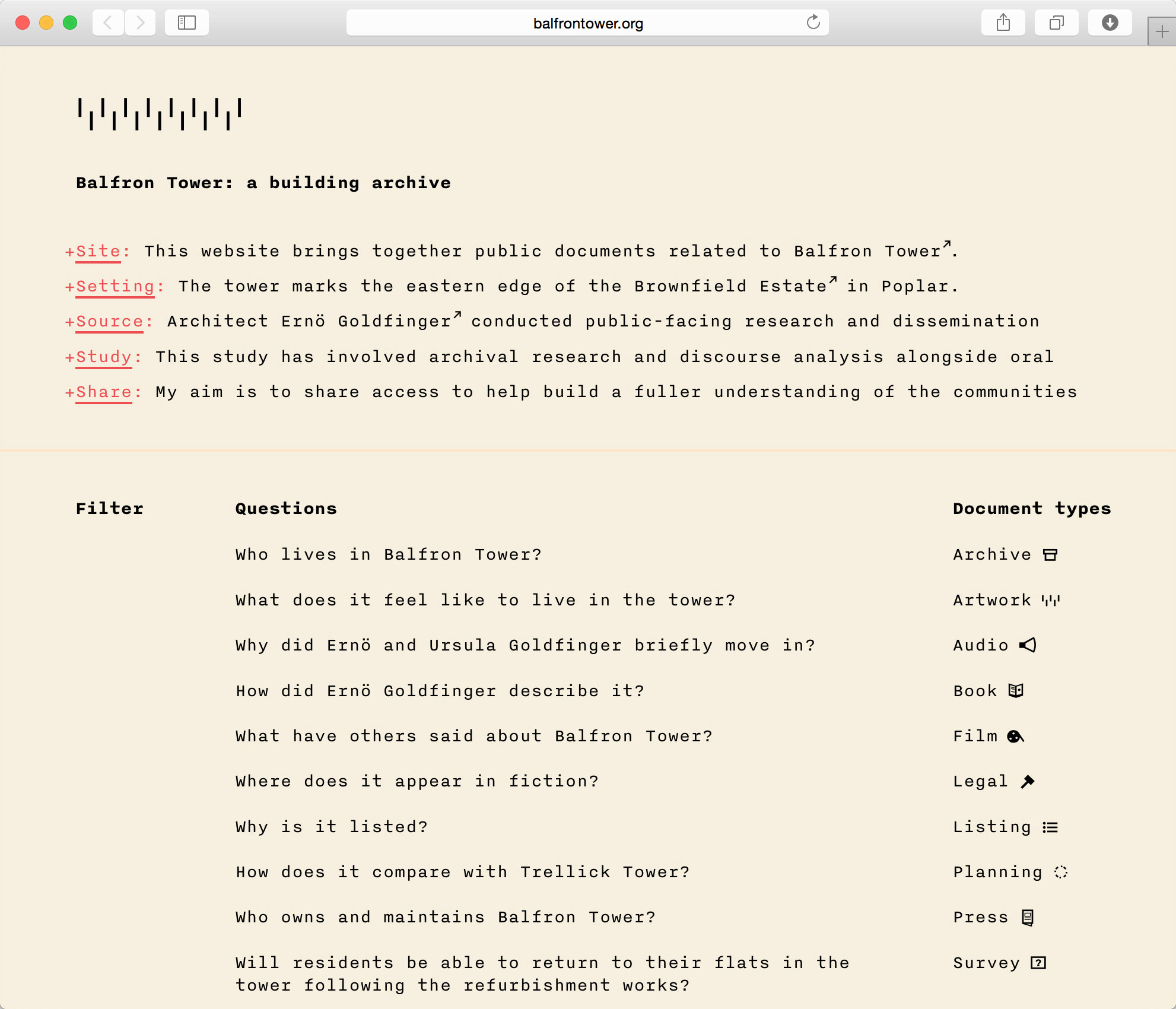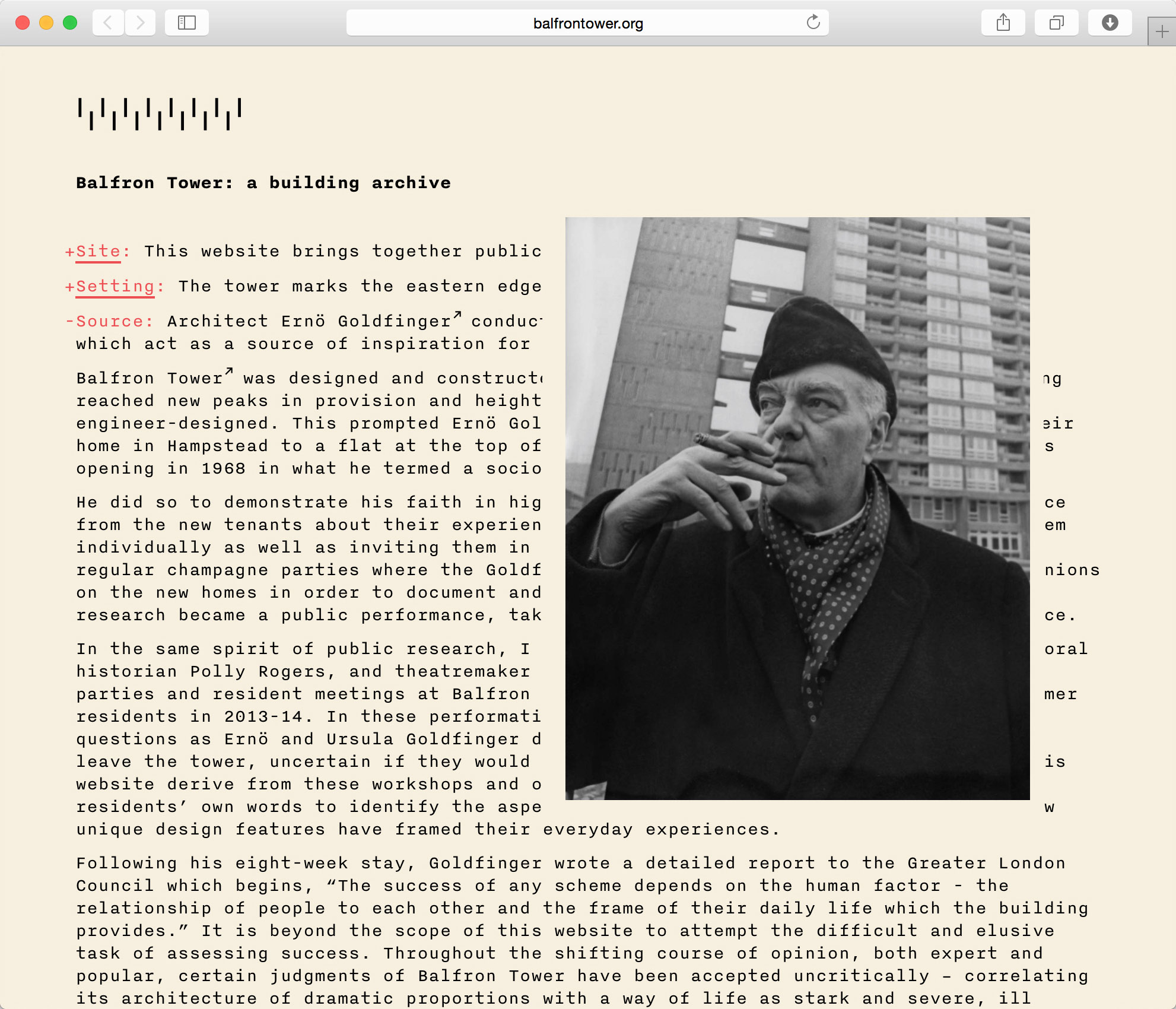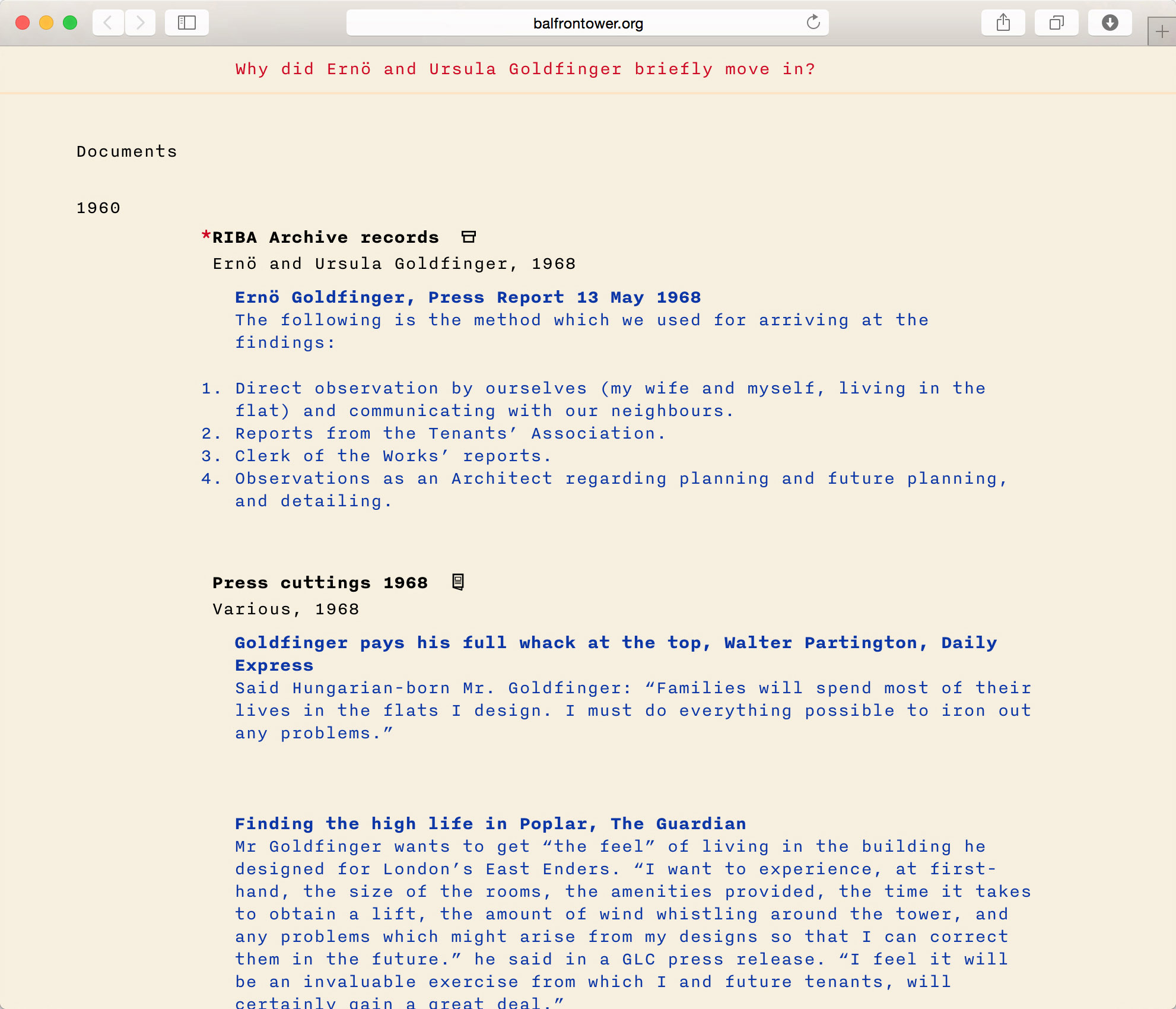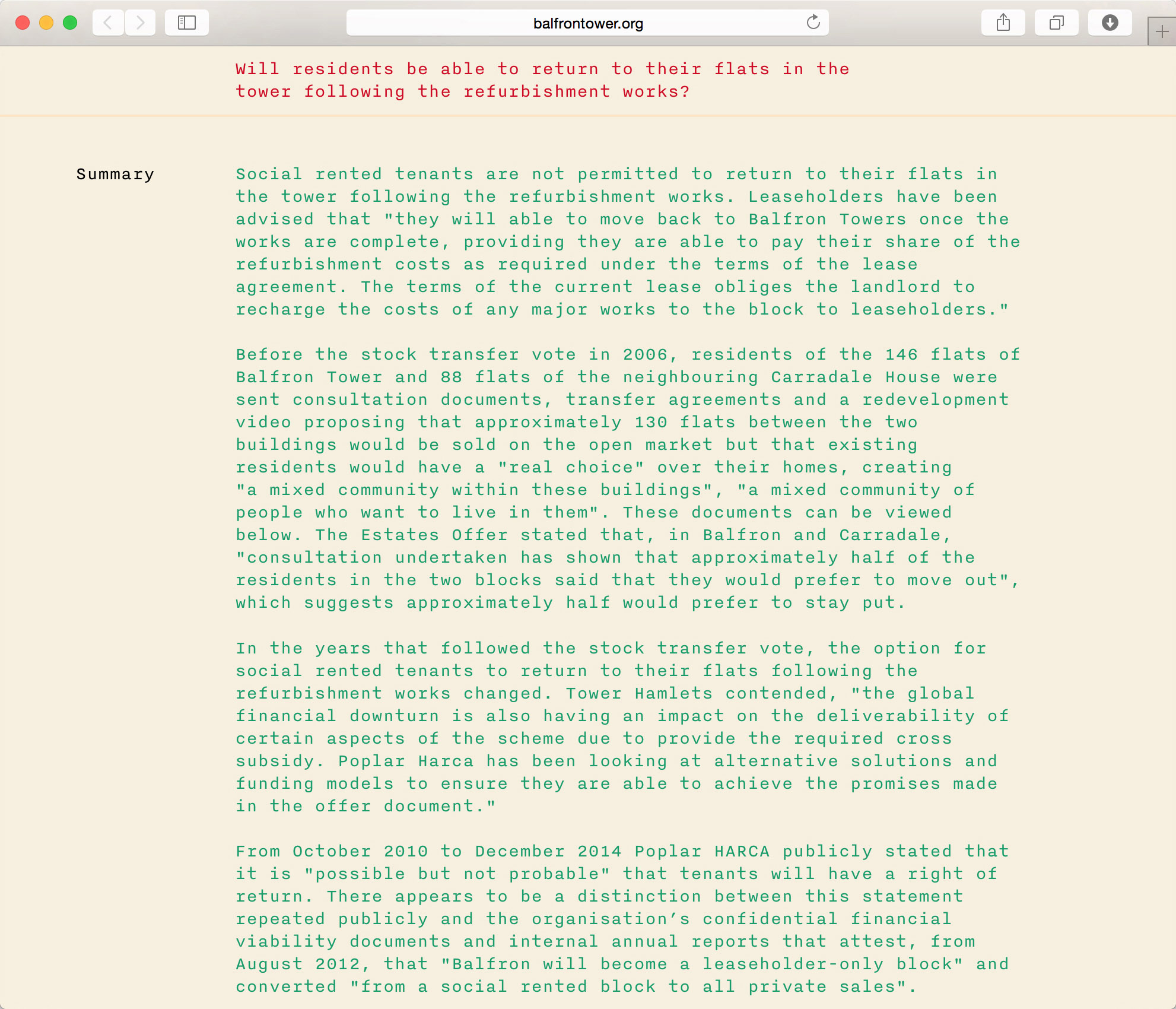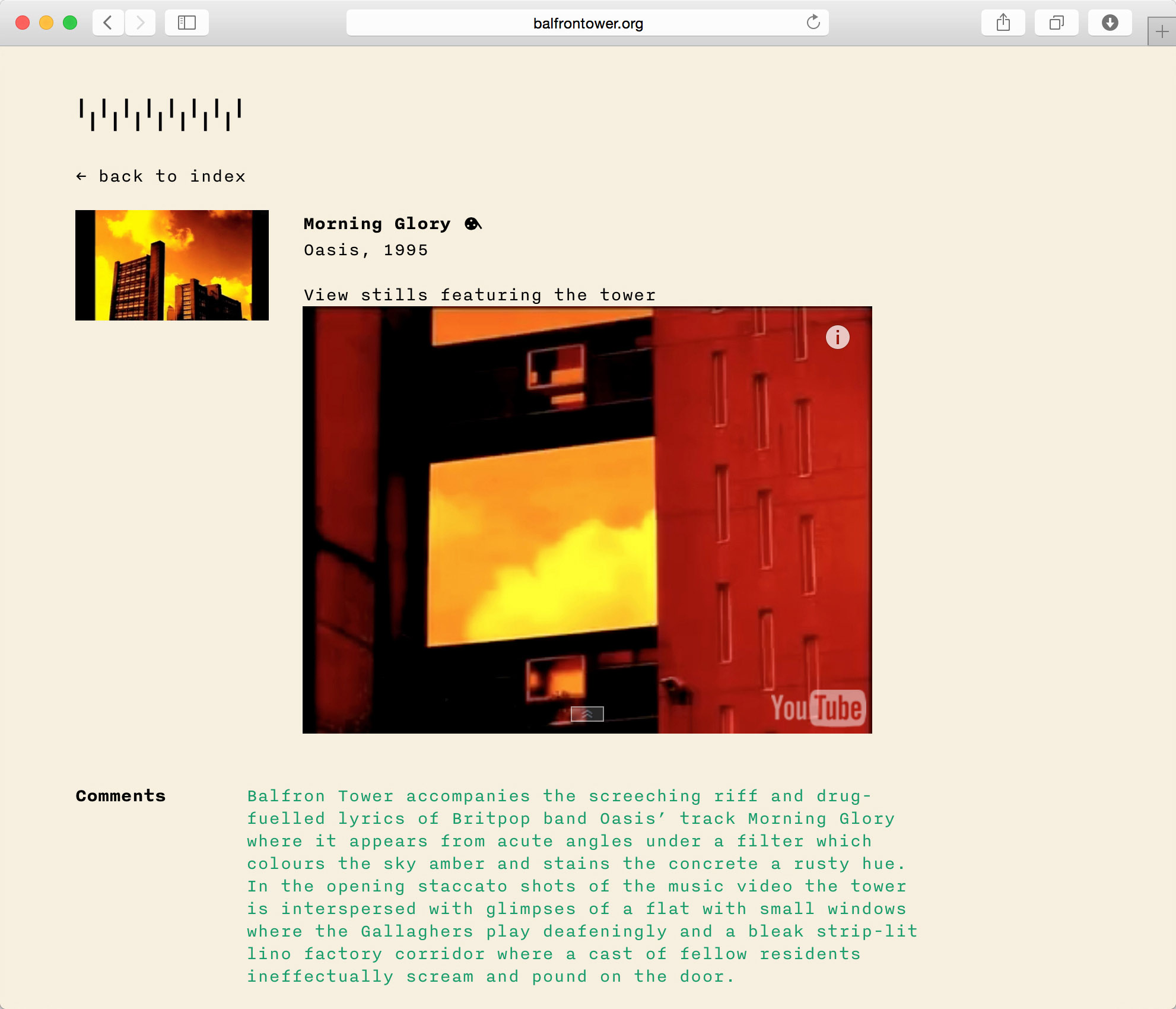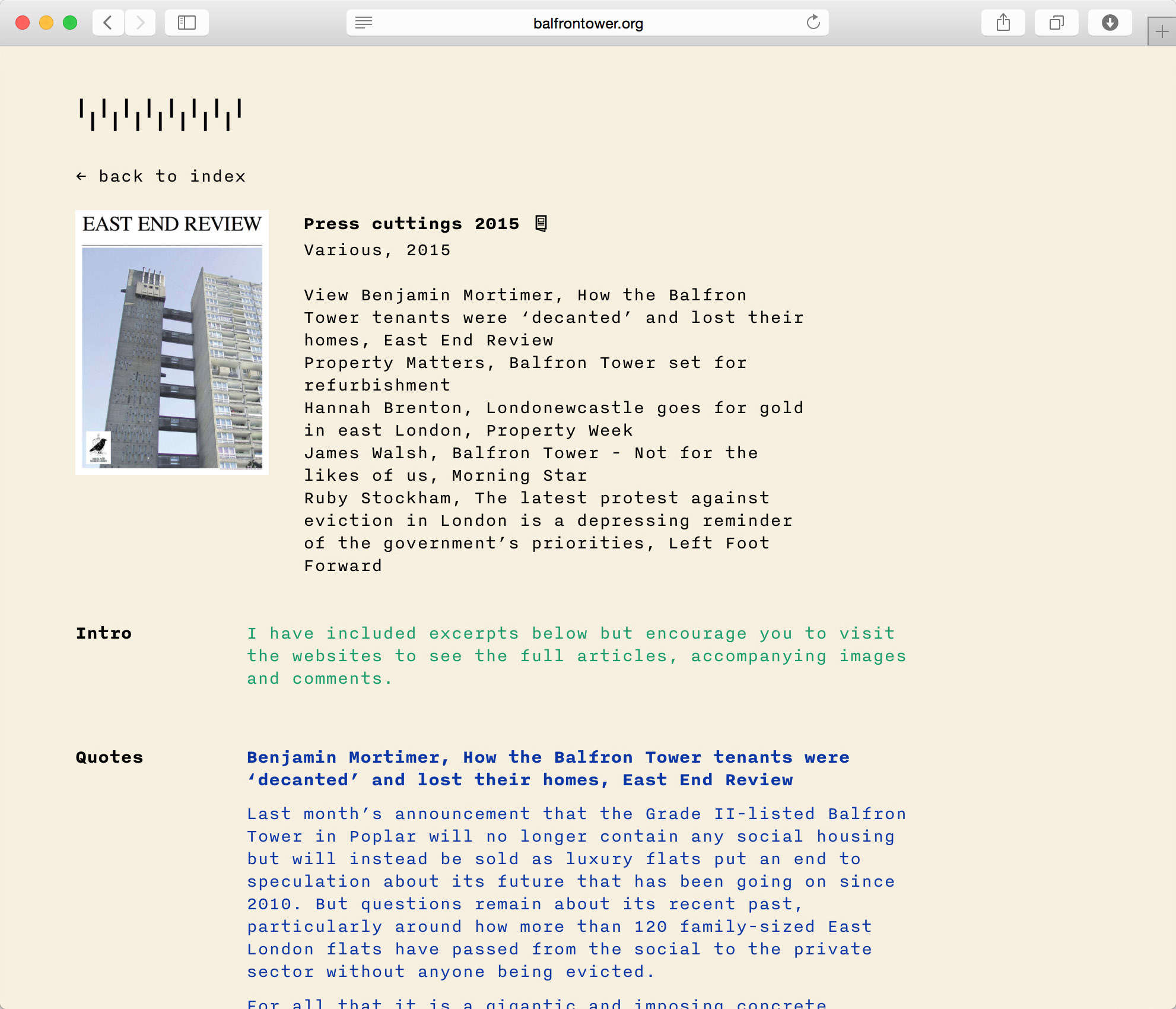A Building Archive
Balfron Tower: a building archive is a website that brings together public documents related to Balfron Tower. It presents a window to all the material which I have gathered over the course of my research. This is displayed in a timeline, from archival documents during the tower’s design phase to the most recent press articles. You can download the documents in full or view selected quotes from them which I’ve transcribed.
These documents can be intimidating; difficult to access because they are hidden behind archival protocols, journal subscription costs and labyrinthine planning portals; or difficult to understand because of bureaucratic, academic or legal language. The lack of clarity and certainty can be a source of further discomfort for those caught up in complex and contested processes of urban change.
For ease of understanding, the material is categorised under ten document types and filtered through a dozen questions. The questions are loosely grouped around three subjects; the experience of living in Balfron Tower; opinions of the tower from those outside; and how the ownership, architecture and occupancy of the tower will change following regeneration works.
I collaborated with designer Duarte Carrilho da Graça to make www.balfrontower.org, an open-access website as a vehicle to communicate this volume of material which playfully reflects the aesthetic of Balfron Tower – an impossibly tall tower of 120 documents spanning five decades. It is crowned with Balfron’s familiar motif of arrow-slit windows in stepped rhythm. But here they don’t pierce sheer concrete walls or cascade down the façade like rain. They lie against a beige background, atop an impossibly tall tower of text that rises and rises as the user scrolls and scrolls through the documents stacked chronologically. When you click on these documents you are whisked away to other pages, from which complete versions of the documents can be downloaded in full or selected quotes viewed in blue type, my explanatory comments in green, and comments from external contributors in red.
I coordinated the timing of the website to a month before the date that had been earmarked for the planning application to provide a resource for those looking to comment or object to plans which would lead to Balfron’s privatisation. The documents included made clear the statutory affordable housing targets and best practice guidelines on accountable regeneration that the planning application failed to meet. To negotiate the associated stringent copyright restrictions, I transcribed all archival, academic and planning material as well as the content of films and lectures. I isolated key quotes within documents that revealed how decisions were framed and structured, taking inspiration from the websites of other community groups, bloggers and campaigners who shared resources and meticulously highlighted policy discrepancies in planning documents. While providing the facility for users to search these documents, I also listed thirteen simple questions that residents had raised during our workshops and oral history interviews. In the absence of responses from the official bodies to whom they had directed these questions, I began to compile appropriate sources to provide direct answers. The questions, when clicked, provide a short answer and selects relevant documents from the timeline below, assembling quotes which act to provide a more detailed response.
The website differs substantially from a typical academic output. Rather than an authored article that takes time to polish and publish, it presents the bare evidence of relevant documents for the public to draw upon, opening up resources for scrutiny and providing the user the ability to construct their own narrative around the evidence in their own terms.
Reviews
An important resource, and exemplar of its type, Professor Jeremy Till, 2016.
References
Published as Roberts, D. (2016) ‘Make Public: A Building Archive of London’s Balfron Tower’, in The Participatory City, Beebeejaun Y. (ed.), pp.65-73.
